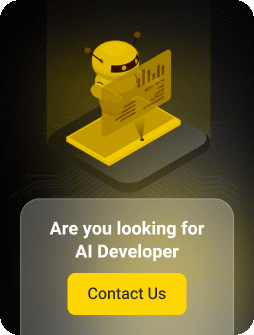Generative AI is a groundbreaking branch of artificial intelligence that empowers machines to create unique content, including text, images, and music, blurring the lines between human creativity and machine capability to unlock endless possibilities. Let’s explore how it works and the potential it holds for the future.
Generative AI is making its presence felt everywhere: writing, drawing, composing, and even coding. Tasks that once seemed exclusive to human creativity.
It’s pretty likely you’ve encountered its work already, perhaps without even realizing it.
What’s even more fascinating is that this isn’t a glimpse of some distant future, it’s happening right now.
Machines are creating content so authentic and seamless that it’s easy to mistake it for something crafted by human hands.
But what exactly is generative AI, and how is it redefining what machines are capable of?
What Is Generative AI?
Generative AI is a type of artificial intelligence designed to create new content based on the information it receives. Whether the input is text, an image, a sound, or even a 3D model, the AI processes this data, learns its patterns, and uses that understanding to produce something entirely new.
For example, if you provide it with a short sentence, the AI might expand it into a detailed story. If you give it a picture, it can analyze its features and either recreate a similar image, transform it into a new artistic style, or generate an entirely fresh design inspired by the original input.
What makes generative AI so powerful is its ability to recognize patterns and structures in the data it has been trained on, allowing it to create outputs that feel both unique and relevant. This capacity to understand and generate has turned it into a groundbreaking tool, merging creativity and technology in ways that were once unimaginable.
How Does Generative AI Work?
Generative AI follows a carefully designed process to create new content based on the input it receives.
1. Learning from Data
Generative AI starts by training on large datasets filled with text, images, audio, or other types of information. It analyzes this data to find patterns, relationships, and structures. For instance, a text model might learn how words are used in sentences, while an image model learns about shapes, colors, and textures.
2. Advanced Model Architecture
It uses advanced Generative AI models to process and generate content.
These include:
Transformers: Perfect for handling sequences, like sentences or time-based data. Models like GPT use transformers to generate coherent text.
Generative Adversarial Networks (GANs): Ideal for creating images, videos, and other visuals. GANs involve two networks working together: one generates content, and the other evaluates and improves it.
3. Processing the Input
When you provide an input, such as a text prompt, an image, or even a few musical notes, the AI processes it by breaking it down into smaller parts. For example, text is split into words or phrases, while images are divided into pixels. The AI then looks for patterns in the input to understand its structure and meaning.
4. Matching Patterns and Making Predictions
Using the knowledge gained during training, the AI identifies patterns in the input and applies them to make predictions about what should come next. Given a sentence, it might extend it with the most likely continuation. With an image, it could determine how to enhance or transform it into a fresh creation that aligns with the input’s style or context.
5. Generating Content
The AI then generates new content based on its predictions and training.
This could be:
- A detailed paragraph based on your text input.
- A brand-new image inspired by the input photo or style.
- A unique piece of music created from a few initial notes.
6. Refining the Output
Some systems include a refinement stage where the AI evaluates the generated content for quality and coherence. For example, in GANs, the discriminator network helps the generator improve by identifying flaws, and ensuring the final output is as realistic or relevant as possible.
7. Improving Through Adaptation
Generative AI doesn’t stop at one round of learning. Through fine-tuning, Gen AI can adapt to more specific tasks by training on specialized datasets. This adaptability allows it to create outputs that are increasingly tailored to different needs and styles.
Generative AI’s ability to process input, recognize patterns, and generate creative, human-like content is what makes it so revolutionary. Each step in the process builds on the last, resulting in outputs that are not only impressive but also practical in real-world applications.
How Can Generative AI Be Used?
Generative AI is reshaping industries by enabling automation, creativity, and problem-solving. Here’s how it is being applied today across various fields:
Revolutionizing Written Content
Generative AI is used to craft engaging articles, personalized emails, and compelling marketing copy. Writers use it as a tool to brainstorm ideas, speed up drafts, and polish content. It’s also widely adopted in social media campaigns and customer outreach.
Transforming Visual Media
From designing logos to creating stunning artwork, Generative AI applications power creativity in visual media. Through apps like Canva, Adobe Express, and more, it can produce custom illustrations, edit photos, and even generate entire video scenes. Designers and filmmakers are leveraging this technology to enhance productivity and bring fresh ideas to life.
Composing Music and Sounds
In music and audio production, generative AI creates original compositions and sound effects. It can tailor melodies for specific moods or genres, making it an invaluable tool for game developers, filmmakers, and advertisers looking for unique auditory experiences.
Enhancing Customer Support
Businesses are deploying AI-driven chatbots to handle customer inquiries with human-like responses. Generative AI enhances these systems by creating dynamic and context-aware interactions, ensuring customers receive quick and accurate assistance.
Empowering Software Development
In programming, generative AI acts as a coding assistant, generating snippets of code, debugging errors, and suggesting entire functions. It helps developers reduce repetitive tasks and focus on complex challenges, accelerating project timelines.
Boosting AI Training with Synthetic Data
Generative AI creates synthetic datasets for training machine learning models. This is especially useful in fields like autonomous vehicles or healthcare, where gathering real-world data can be expensive or limited.
Supporting Healthcare Innovations
In healthcare, generative AI generates detailed summaries of medical records, assists in report writing, diagnosing, and even aids drug discovery by simulating molecular structures. It streamlines workflows and supports faster decision-making for professionals.
Enhancing Gaming Experiences
NVIDIA’s DLSS3 is powered by AI and it enhances frame rates for certain GPU owners. However, its impact goes beyond performance improvements. Game developers are utilizing generative AI to dynamically create characters, landscapes, and storylines. This technology drives immersive virtual worlds, enabling more engaging gameplay and realistic simulations for both players and trainees.
Generative is a driving force behind innovation all thanks to its ability to adapt and deliver across industries makes it a cornerstone of modern technology, transforming how we work, create, and solve problems today.
The Future of Generative AI
The future of Generative AI is set to revolutionize technology even further by combining creativity with autonomy and adaptability.
One of the most exciting prospects is its integration with Agentic AI, which can make decisions and take actions independently. Together, these technologies could create systems capable of generating content and executing strategies autonomously, transforming fields like healthcare, marketing, and logistics.
Generative AI is also expected to become more multi-modal, seamlessly handling text, images, audio, and 3D models in a single system. This would enable more versatile applications, such as designing products, generating promotional content, and creating immersive experiences, all from a single input.
Self-learning AI systems will also play a key role in the future, allowing Artificial Intellegence to improve continuously without needing constant retraining. These advancements will make AI more flexible and capable of solving complex, real-world problems.
As its capabilities grow, ethical considerations will take center stage, ensuring fairness, transparency, and accountability in its applications. From robotics to education and beyond, it will redefine innovation, offering Artificial Intelligence solutions that blend intelligence, creativity, and practicality in unprecedented ways.
Challenges and Ethical Considerations of Generative AI
Generative AI holds transformative potential, but its adoption brings several challenges and ethical concerns that require thoughtful attention.
- Bias in Outputs: Generative AI systems often reflect the biases present in their training data. If datasets are unbalanced or flawed, the outputs may unintentionally reinforce stereotypes or misinformation, undermining trust and fairness.
- Misuse and Misinformation: The ability of Generative AI to create highly realistic content, such as deepfakes or fabricated news articles, presents significant risks. These tools can be misused to deceive, manipulate, or cause harm on a large scale.
- Inaccuracy: Generative AI can sometimes produce content that appears accurate but is factually incorrect or misleading. This risk becomes critical in areas like news generation, academic research, or healthcare applications where accuracy is paramount.
- Transparency and Explainability: Many Generative AI models function as opaque systems, making it difficult to understand how decisions are made. This lack of transparency complicates accountability and erodes trust in AI-generated content.
- Data Privacy Concerns: The use of sensitive or personal data for training raises questions about privacy and data security. Ensuring compliance with regulations like GDPR is critical to maintaining user confidence.
- Job Displacement: As AI automates creative and technical tasks, concerns about workforce disruption and job displacement are becoming more prominent, especially in industries reliant on human creativity.
- Intellectual Property Challenges: Generative AI often uses copyrighted material during training, raising legal and ethical issues about ownership and credit for AI-generated works.
Addressing these challenges requires a collaborative approach. Developers, offering Artificial Intelligence development services, must prioritize fairness and accuracy in AI systems, governments need to enforce robust regulatory frameworks, and users should be educated on responsible AI use.
Final Thoughts
Generative AI is changing the way we think about creativity and innovation. At this point, it’s more than just a tool, it’s a technology that solves problems, designs new ideas, and creates content that once required human effort.
The best part is, this is only the beginning for Generative AI. As it evolves, it will transform industries, improve processes, and unlock opportunities we haven’t yet imagined.
If you’re looking to harness the power of Generative AI development services for your projects, we’re here to help. Reach out to us today to discover how our expertise can bring your vision to life.













